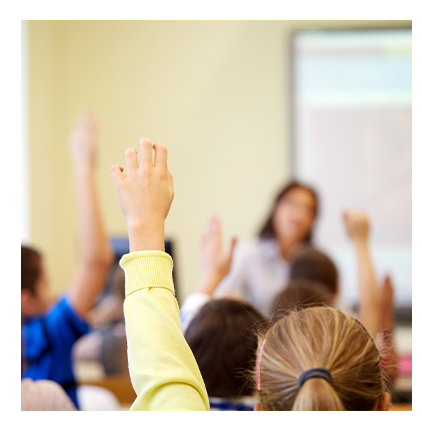
Written by Dr. Allison Powell, Chief Operating Officer of Evergreen Education group which leads the Digital Learning Collaborative (DLC). She is the former Senior Learning Strategist for BloomBoard re-thinking PD and licensing. She is the former Vice President of iNACOL. Allison taught & helped build the Clark County School District’s Virtual HS & an online PD program for the NV school district. She has served as a board member for several organizations and completed her doctorate from Pepperdine University in educational technology & leadership.
A small percentage of K-12 students have been accessing online and blended programs and schools since the mid 1990s. The field has evolved through research, policy changes, and the sharing of new pedagogical practices and the re-thinking of traditional school operations and models.
In March 2020, the entire world was forced to move into some form of distance learning. We like to call this emergency remote learning. Some schools mailed packets of worksheets to students and called them over the phone, while others lectured and connected with students in synchronous platforms for seven hours a day. Schools and districts were not prepared for the pandemic and online learning, but the majority also did not seek the assistance and knowledge base of the practitioners who have learned so many lessons over the past two decades.
Emergency remote learning differs from high quality online learning in that everyone was forced into it without any preparation. In more traditional online schools, leaders, educators, and families had the option to participate in this new way of learning. There was little to no training provided, teachers had to create digital content/courses while teaching it and learning how to use new technology. They tried to replicate what was happening in their in person classrooms in their online classrooms. Below is a graphic of all of the differences between the two forms of digital learning.

Source: Digital Learning Collaborative
However, since the pandemic, we have learned some lessons and have seen new trends emerge in the field of K-12 online learning. Schools and districts have seen there is value in many benefits to helping educate our students.
While enrollments in online learning programs rose from 30-300% in most schools and programs, we are beginning to see them level out. About 1% of the K-12 student population were enrolled in online learning schools prior to the pandemic and that number has grown to about 3%, with more students taking advantage of supplemental online courses.

With demand for and enrollments growing in online and hybrid schools and programs, districts are creating new opportunities for students to keep them enrolled. With the development of these new schools, we are beginning to see some new trends in the field.
The demand for elementary online learning options has seen the most growth. Prior to the pandemic, most online learning options were for high school students with some options for middle school, and very few for PK-5 students. A lot of new training, technology tools and digital content were created for elementary educators and students during the pandemic. Now that there is more demand and resources for this population, we are beginning to see more options being created.
This also has led to the increase in synchronous learning in online schools. Prior to the pandemic, most online learning happened asynchronously (anytime, anywhere), where the opposite happened in emergency remote models. Teachers are trained to be the experts with all of the knowledge that they must share with students. They are the “sage on the stage” in their classrooms and felt more comfortable teaching students with direct instruction in the online environment. Holding the elementary students’ attention, and assisting them with assignments as they are learning to read was another reason for the majority of teaching being done in synchronous environments. While this wasn’t the norm prior to the pandemic, we are seeing more demand for it to be an integral part of online learning programs from both parents and students, forcing online educators to change their current models to include more synchronous opportunities for learning.
Teachers, well deserving, were hailed as heroes at the beginning of the pandemic, and then 6 months later were the enemy. They are now leaving the profession in masses with districts and schools scrambling to bring in warm bodies, with little to no training to teach our children. Colleges are not graduating enough new teachers, and calls to fill teacher vacancies are getting little to no applicants (qualified or not). However, online schools are getting overwhelmed with applicants. Teachers like the freedom to be able to actually work with students individually and meet them where they are, vs. teaching to the middle, as the online learning environment allows them to work at their own pace. They also like the flexibility and respect as a professional to get their job done, no matter their location or the hours of the day. Districts are going to state virtual schools or local online programs to enroll their students in online courses in hard to staff courses.

We are starting to see other trends in the field, such as the growth of microschools, more Career Technical Education (CTE) programs, students with special needs choosing digital learning, student/family access to the Internet and technology at home, and a growth in Social Emotional Learning (SEL) and building relationships in K-12 online and hybrid learning.

Mostly positive policies have also been passed to support the growth and access to online programs across the country. North Dakota, Rhode Island, and West Virginia have new policies allowing for the growth of online learning, while states like New York, Connecticut, Delaware, and New Jersey have chosen to limit access. The State of Texas has legislated a commission to study online learning and make recommendations for how the state should move forward with the creation and growth of online programs and schools in the state. It will be interesting to see their recommendations at the end of the year as they have done a comprehensive job of researching the entire field over the past 10 months.
The pandemic exposed the world to many forms of online learning and while most were not successful, it has brought an awareness of new practices that can work in high quality programs. Schools and districts are now using research, standards, and are reaching out to their colleagues and experts to create the best new digital learning opportunities for the educators, families, and students who excel in them.





